Only the waves crash against the shore of the Black Sea. Apart from the sound of the waves, hardly anything can be heard here on the beach near Durankulak. A few kilometers further is the border with Romania. But Bulgaria ends here at the sea. Dozens of kilometers of the finest lonely sandy beaches, which, unlike the coast near Albena, Sunny Beach or Golden Sands, have hardly been used up so far. Only a few people with their dogs are on the beach here. Often they are locals. Foreign tourists rarely stray to the beaches of Dobruja Bulgaria. So far, the area is still a real Bulgaria insider tip.
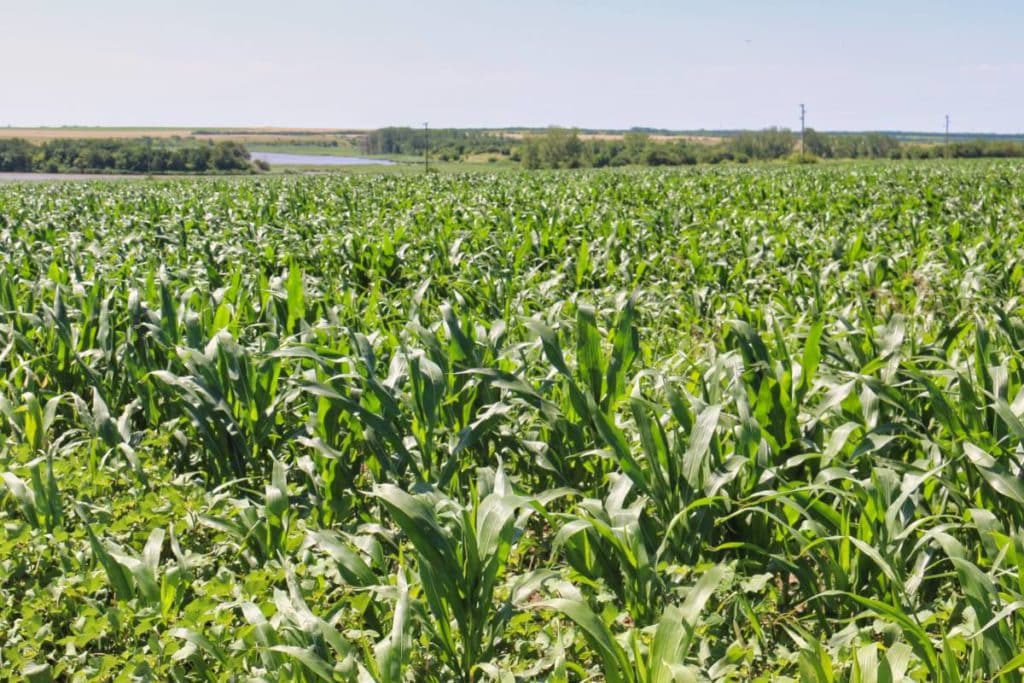
Dobruja Bulgaria as a border region with Romania
The Dobruja is divided between Romania and Bulgaria and stretches from the Danube Delta down here into Bulgaria. The region is full of corn fields cultivated by old tractors. In between you will see many farm workers whose leathery skin has already been dyed in a deep brown tone by the sun. A little north of the border is the village of Vama Veche, which is one of Romania’s insider tips and where young people in particular often party until the morning to alternative music.
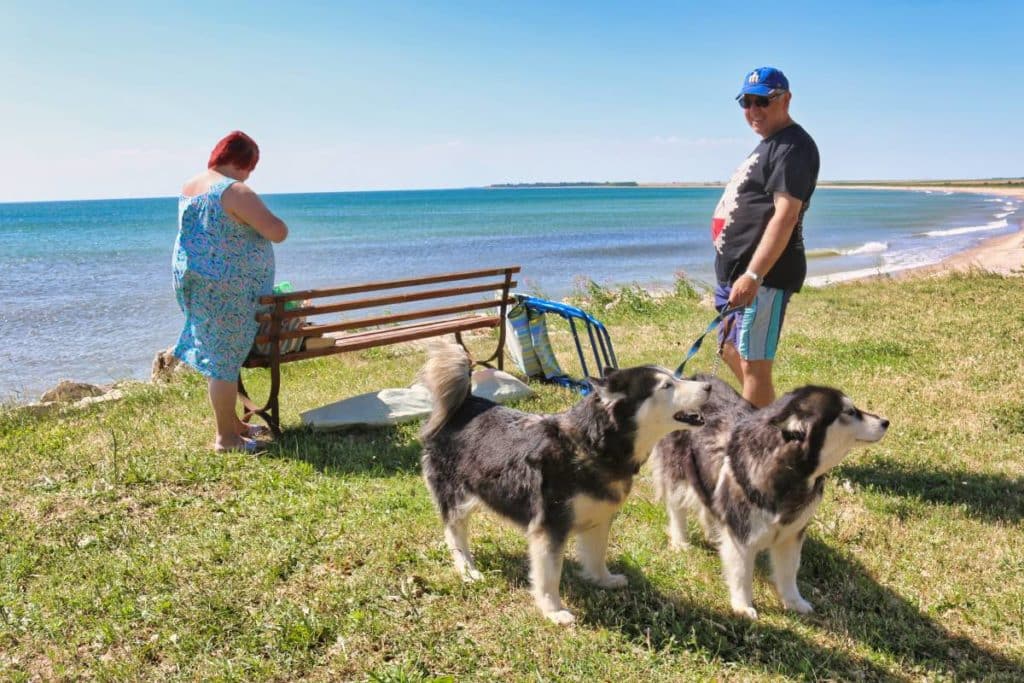
Durankulak – resting place on the bird route Via Pontica
The entire Black Sea coast of Bulgaria is one bird highway. Many birds, large and small, pass through here between their summer quarters in northern Europe and their winter quarters in Africa. In Durankulak, the northernmost village of the Black Sea coast in Bulgaria, and the bird observation station there, everything that has rank and name among ornithologists is present: White and black storks, cranes, cormorants and even pelicans. But the region is especially famous for various species of geese. Birds can be seen all year round around the protected Durankulak Lake.

But also people in need of rest will find around Durankulak what they certainly won’t find in Albena and Golden Sands. While on the beaches there in summer people line up like in a sardine can, on the beach of Durankulak only a few souls lie in the sand. The wind that blows through the Dobruja plain today carries the sand out to sea.
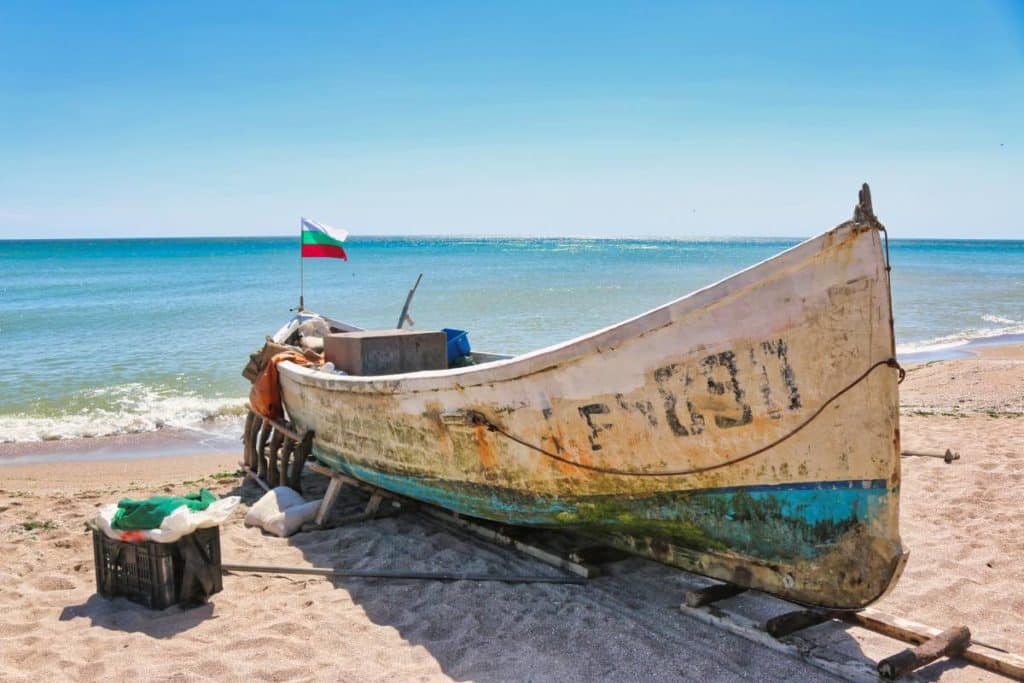
Krapets – Where are the fishermen?
Fishing boat after fishing boat is lined up a little further south of Durankulak at the small port of the fishing village of Krapets. Nets lie next to a wooden house. It seems to be lunch break, because no fisherman is on the beach and yet it seems as if someone has been working on the engines until a few minutes ago. In front of one of the wooden huts Tanja discovers a puppy and immediately takes it in her arms. Until we drive on, she can’t let go of the little ball of fur. I stroll around and see if there is a bit of fresh fish to be found somewhere for the dog. But I realize: Where no fisherman, there no fish.
And the beach nearby is similarly empty. We first have to search until we find it. A few cars are parked at the edge of the coastal sand. Two food trucks supply a few people on wooden benches with drinks. Apart from some music from the plastic loudspeakers, the only other sounds are the waves that hit the fine sandy beach every few seconds. Some creaky Bulgarian tchalga music is blaring from the speakers. But you can also easily overhear it.
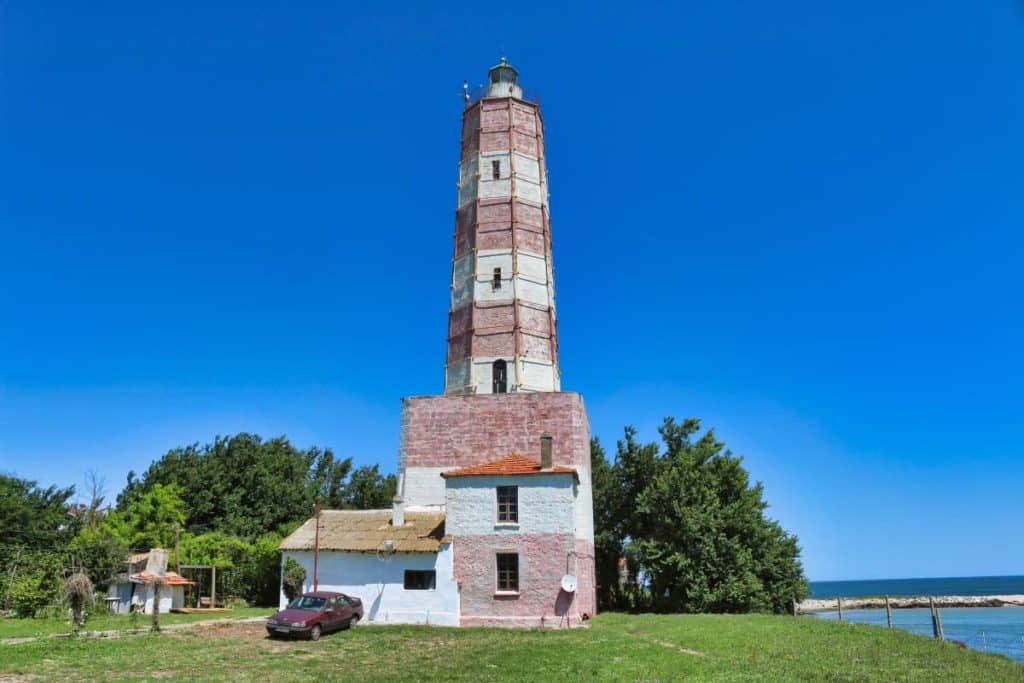
Shabla lighthouse and the cormorant pier
Again a few kilometers further you can see from some distance the lighthouse of Shabla. With its 28 meters it is the largest in Bulgaria. It is typical for this area, but somehow it seems forgotten. The tower has seen better days since it was opened in 1856. If the red color is still a signal color here, then at most as a sign of the decay that can be witnessed here.
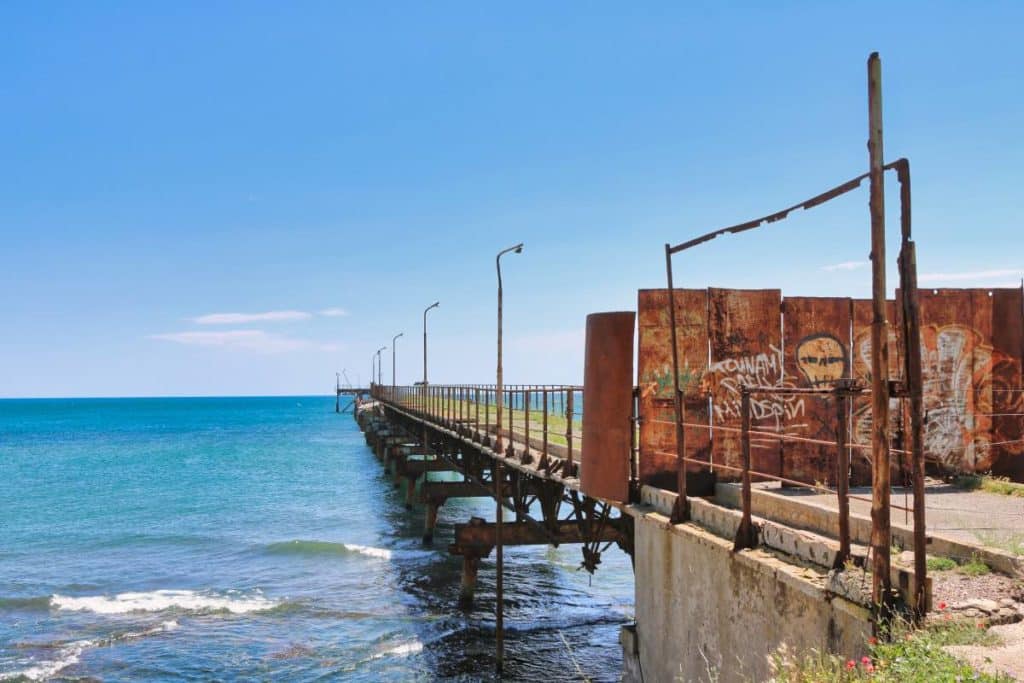
Even more run-down, however, is the pier right next to it. It is separated with a steel barrier. Barbed wire on top of it – definitely no one should be on it. The cormorants, which have now taken over the bridge, hardly seem to care. Our guide Antanas says that there are comparatively few today. But they also contribute to the further decay of the former pier. Soon it will probably sink completely into the waters of the Black Sea. Its days have long been numbered.
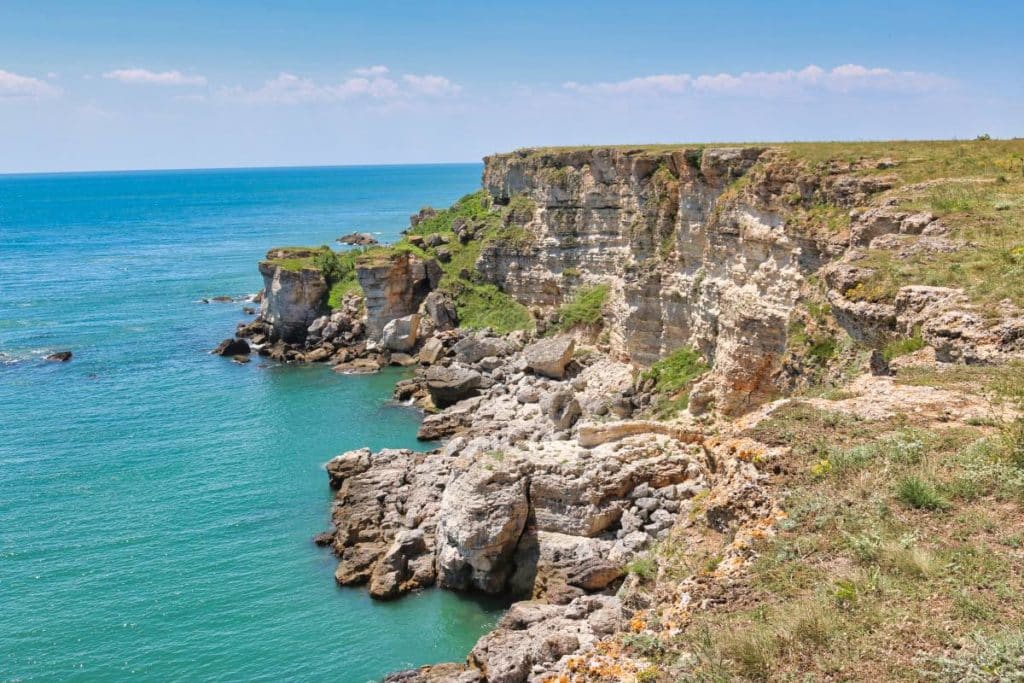
Kamen Bryag – stone formations of man and nature
Further south from Shabla we drive on a small bumpy dirt road back towards the coast. Since it gets a bit too tricky, we park the car and walk the remaining meters. Some stones pile up in the grass. What looks a bit ordinary like a pile of stones is in fact an ancient Thracian necropolis. A cemetery of the ancestors of the Bulgarians, so to speak. Right next to it, a rocky cliff drops steeply. Below, a single man sits on a rock. We wonder how he got there in the first place.

Cape Kaliakra – Watching dolphins in the Black Sea
The parking lot of Cape Kaliakra is the dividing point between the deserted Dobruja from Durankulak to Shabla and the crowded resorts of Albena and Gold Beach. Here, at one of the easternmost points of Bulgaria, we are lucky enough to observe two dark stripes in the water. On closer inspection, they turn out to be two dolphins that keep surfacing to gasp for air. The dolphins, which can grow up to three meters in size, are not light gray here, however, as we know them from Flipper. Unlike the bottlenose dolphins in the TV series, the common dolphin has a dark back and is therefore easily recognizable in the turquoise waters of the Black Sea.
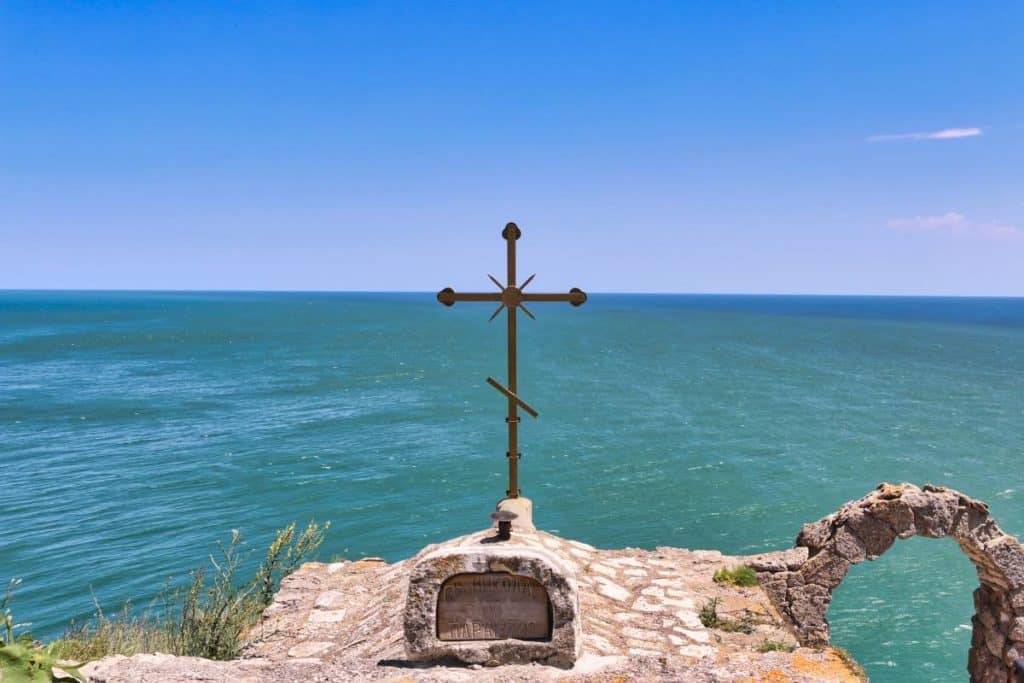
It takes barely 5 minutes until they disappear from sight at a rocky cliff. As we learn later, a few hours earlier our accompanying group even saw a whole group of dolphins with more than a dozen animals. After all, on another trip I saw the Black Sea dolphins on Dzharylhach in Southern Ukraine even closer. We are still envious though while listening to a few anecdotes about the history of the cape, which is still a military base. At the end of the cape, Bulgaria ends and the Black Sea begins. From the small chapel at the end of the promontory, I look out to sea and imagine what the cape must look like from below. If only I could swap places with the dolphins.
Bulgaria book tips
Bulgaria is a popular tourist destination. However, the selection is not yet reflected in the book landscape. But at least there are a few entertaining titles.
The Bradt Guide for Bulgaria is a real gem. All books of these are well researched and we can therefore fully recommend them!
- DuMont Reiseführer Bulgarien: mit extra Reisekarte
- Produkttyp: ABIS BOOK
- Marke: DUMONT TRAVEL PUBLISHER
If you are planning to combine your trip to Bulgaria and the Dobruja with one to neighbouring Romania, you might wanna consider getting the Lonely Planet for both countries as it’s always a good idea to read up before your trip.
- Tasheva, Sibila (Author)
Note: I have been in the country at the invitation of the Bulgarian Ministry of Tourism. Of course, this does not influence my opinion.

